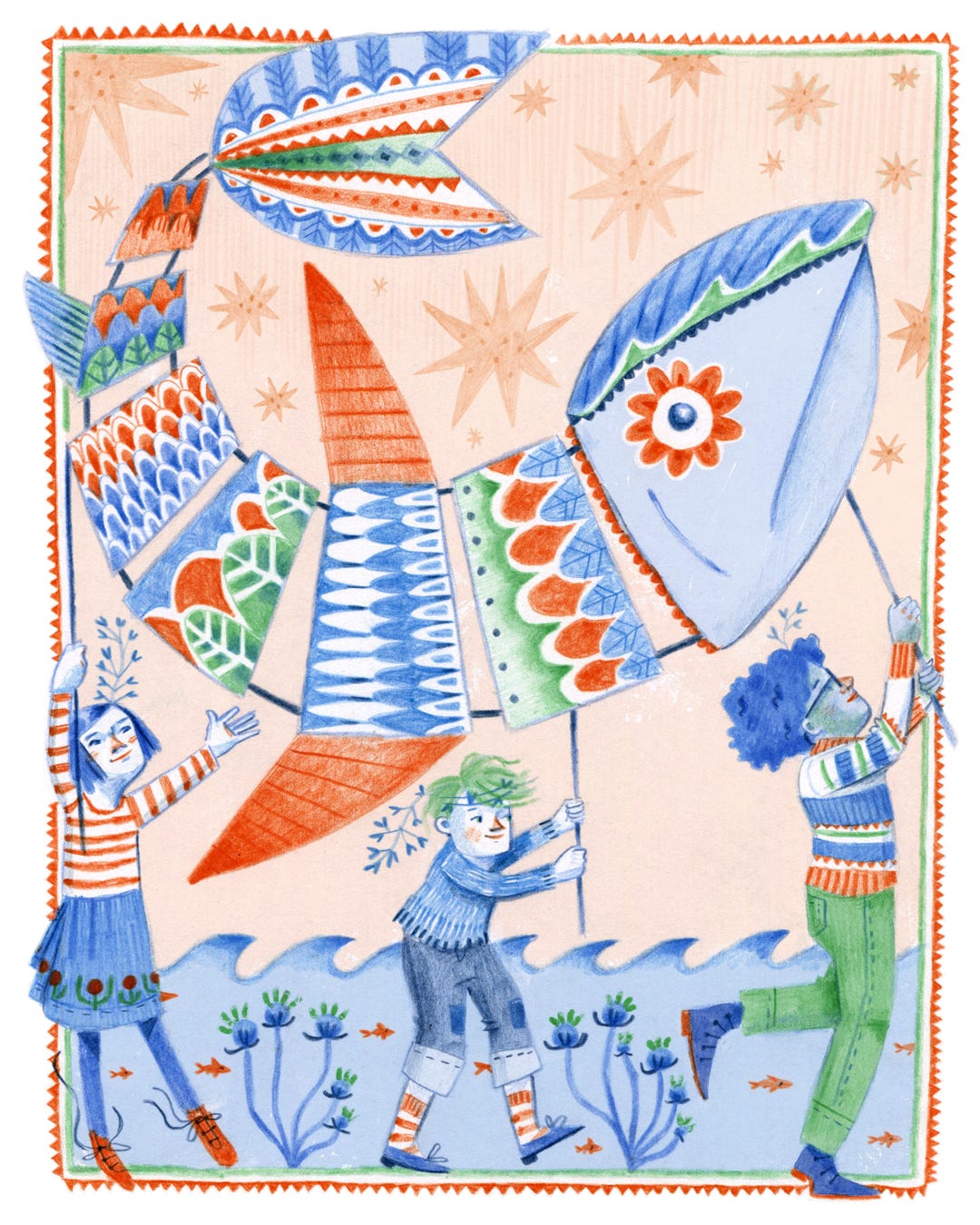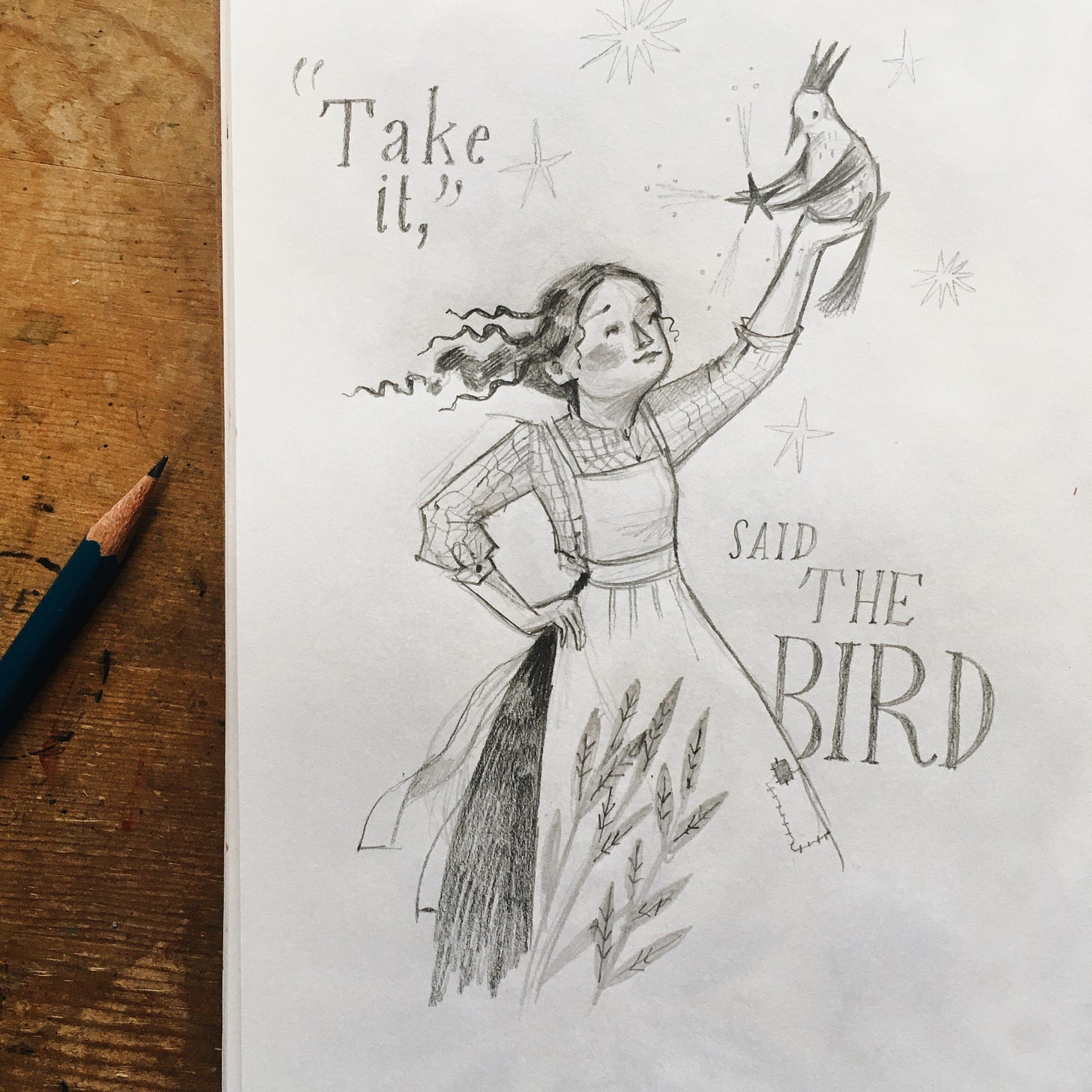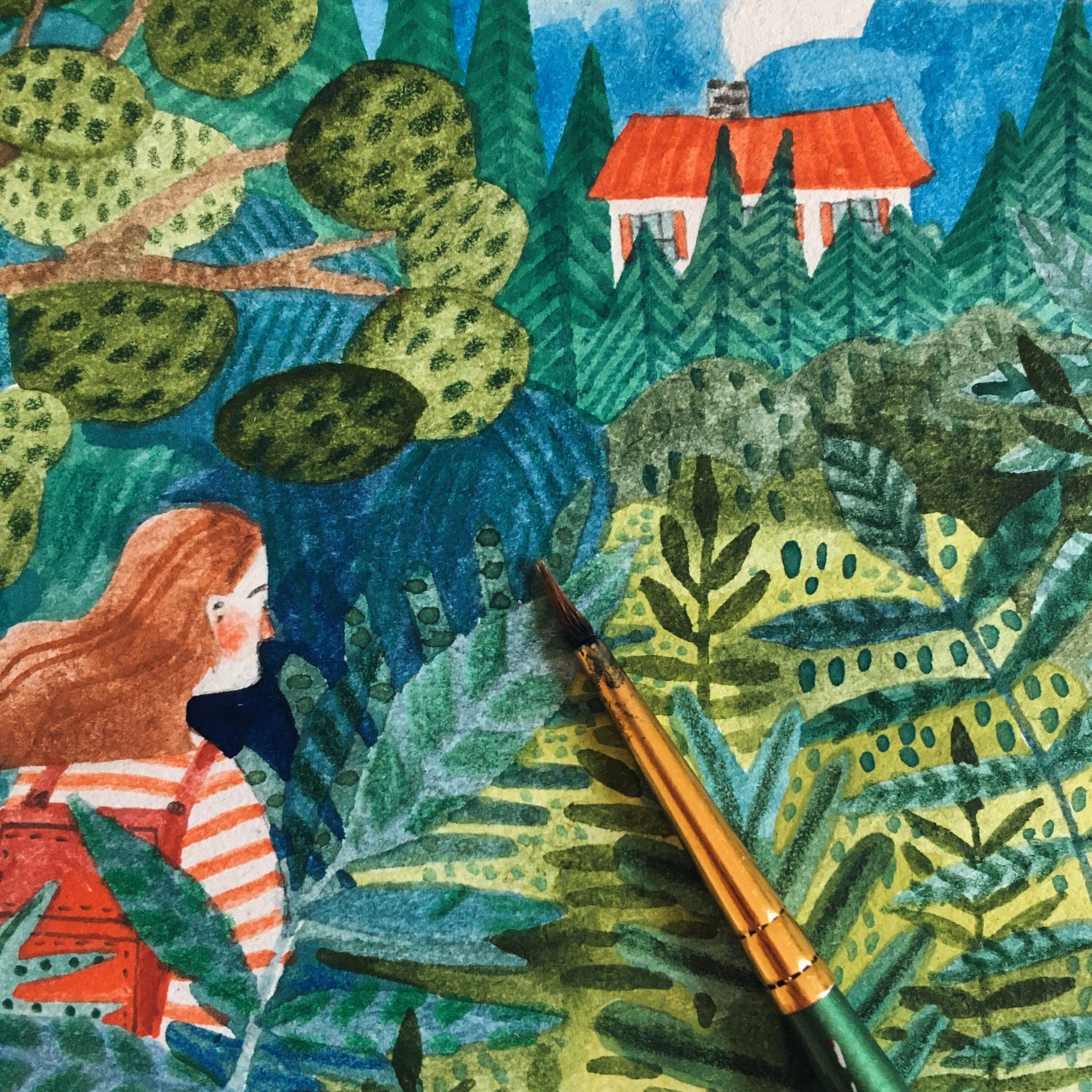What If?
The importance of questions in the creative life
On Instagram stories last week, I decided to do some questions and answers. As a new illustrator, I benefited from the time and generosity of more established illustrators who shared advice and encouragement. Their feedback was really a gift. So it’s my hope to pay it forward.
So back to Instagram. One question that I got that seemed simple enough on the face of it was: where do you get your ideas? I gave a pretty standard answer, But the longer I’ve sat with the question, I think I could’ve answered better. So here’s a shot at that.
The Typical Answer:
Most illustrators would say they get their ideas from a range of places: books, movies, hobbies, art, nature, music, etc. All good answers! And I think this is true up to a point. But I think ideas come from an even more basic place than this. They come from a point of curiosity. When we approach the world around us with inquisitiveness, ideas flood in. We ask, “What if,” and follow the thread.
Asking What If:
In the illustration above, I was inspired by an article I’d read about the Shaftesbury Snowdrop Festival. A celebration of all things Snowdrop, it was the images of children carrying gigantic faux flowers that mesmerized me. It made me wish we lived in a world less cosmopolitan, a world content to celebrate the ordinary and the everyday. And that got me thinking about celebrations and processions in general. That in turn lead me down a rabbit hole of wondering what sort of festival would suit my own corner of the world, here in New England. And then I got thinking about lobsters and fishing and haddock and the fish dinners my grandmother used to make for us after piano lessons on Friday nights. Then this illustration began to evolve: a trio of children, practicing for their debut at a haddock jamboree. They’d have to be able to convincingly wriggle the fish down the street. They’d need to choreograph a dance. Above all, they’d be honoring their hometown fish.
And that all came out of asking, “What if.”
Keep asking questions until you get an answer:
There’s a girl in a field. What’s she doing? She’s met a bird. Does it sing? Nope, it talks. A talking bird — it must be special? Possibly. So if it’s special, how do you differentiate between that and a run of the mill avian specimen? A crown would probably help. So a talking noble bird meets a girl and this bird is unique amongst all other birds. Why would it talk to the girl? Maybe she’s special, too. Maybe she’s lonely. Maybe she’s been weeping, because she’s all alone in the world. And in this moment of despair, she’s cried out to the universe. And what answers her back? The bird. But how does it answer? With a treasure. With a star. With a promise. But will the girl accept this gift?
And we could go on and on until we reach a point where our curiosity is (possibly) satisfied. The coffee will have gone cold. We’ll be a million miles from where we started. But your mind’s eye is full of a myriad of images by simply asking a question and following its lead.
Your first idea is your worst idea:
That sounds harsh, but you get the picture. Sometimes your gut reaction is the right reaction (especially in matters of crisis and safety). But creatively? I’m less inclined to believe this is true. Our first ideas are generally unexamined. They’re safe. They haven’t been pushed and prodded and proven. But when we question that initial idea? Then things get interesting.
For instance, you want to make a book about a kid who won’t eat his vegetables but who should eat his vegetables. Why should he eat his vegetables? To grow up healthy and strong. Nice, but to the average six year old, that’s an incredibly abstract concept. You’re too focused on the next episode of Danny Go and your otter pop to really care deeply about the benefits of carotene and antioxidants. So we need to quantify the concept of growing up. How? Let’s re-frame this as growing up meaning that you get to pursue adventure. You can be an astronaut or a circus performer. You can parachute behind enemy lines. Or maybe you’ll be the farmer with ostriches and llamas and three acres of carrots. Well, to walk in zero gravity, you have to be in shape. If you’re going to be a pro at the trapeze, you better have biceps. Carrots will benefit your eyesight as you float down into hostile areas at night. And if you’re going to grow carrots, you might as well enjoy them (or if you don’t, your llama might). Enter vegetables. So suddenly the concept for an overly didactic snooze-fest has gotten more interesting, all by asking questions and seeking answers.
But why. Why? Why!
One thing that used to make me cringe in college was critique sessions. “Why did you choose that color? What do you think it represents? If it represents xyz, does that really serve the message you’re crafting?” And so on and so on. Asking, “why” pushes us out of our comfort zones. We either reaffirm the direction we’re on or we see where we need to course correct. Questions are alternatively uncomfortable and invigorating. We squirm. We ponder. We ultimately push past the obvious and into the intriguing.
Questioning Art. And Life.
If questions are good for art, they’re even better for life. What matters to me? Who matters to me? How do I bring that into my day to day life?
(Here, I wish I could find a gif of Wanda from “Corner Gas” saying, “All good questions, Oscar.” But alas, the internet has failed me. IYKYK).
But in all seriousness, we’re all creatures of habit. We all crave comfort in a chaotic world. And there’s definitely a time and place for that. But sometimes it’s worth asking, “What if?” You might not end up dancing in a fish festival. You probably won’t be greeted by a bird with magical powers. But you will have opened yourself up to wonder. And in an increasingly jaded world, we could all use more wonder.
So ask a question. And look for an answer.





